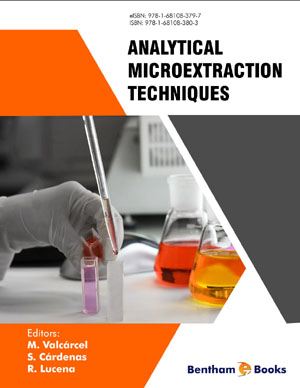Abstract
The number of applications of liquid phase microextraction (LPME) techniques has undergone a dramatic increase during the last years. Miniaturisation of sample preparation encompasses several advantages, i.e., low consumption of extractants, integrated operation, ease of clean-up, large preconcentration factors, apart from an increased greenness, as compared to classical solvent extraction. Among LPME, single-drop microextration (SDME) approaches have deserved much interest. Versatile and adaptable procedures to every each analyte and matrix have been reported. Extractants are not only limited to organic solvents, but ionic liquids (ILs) and even aqueous solvents can be also employed. Whereas, analytical techniques based on chromatographic/electrophoretic separations and some modes of atomic spectrometry were applied in early applications, SDME has also been exploited in combination with other detection approaches such as UV-vis spectrophotometry, fluorospectrometry, chemiluminescence, etc. This has spread the use of SDME to almost every application area. In this chapter, the state of art of SDME and its main modes is reviewed.
Keywords: Anions, Atomic-spectrometry, Continuous-flow, Direct-immersion, Directly-suspended, Electrophoresis, Elements, Gas-chromatography, Headspace, Ionic-liquids, Liquid-chromatography, Mass-spectrometry, Microextraction, Organic- compounds, Organometals, Single-drop, Speciation, Three-phases, Traceanalysis, Two-phases.


